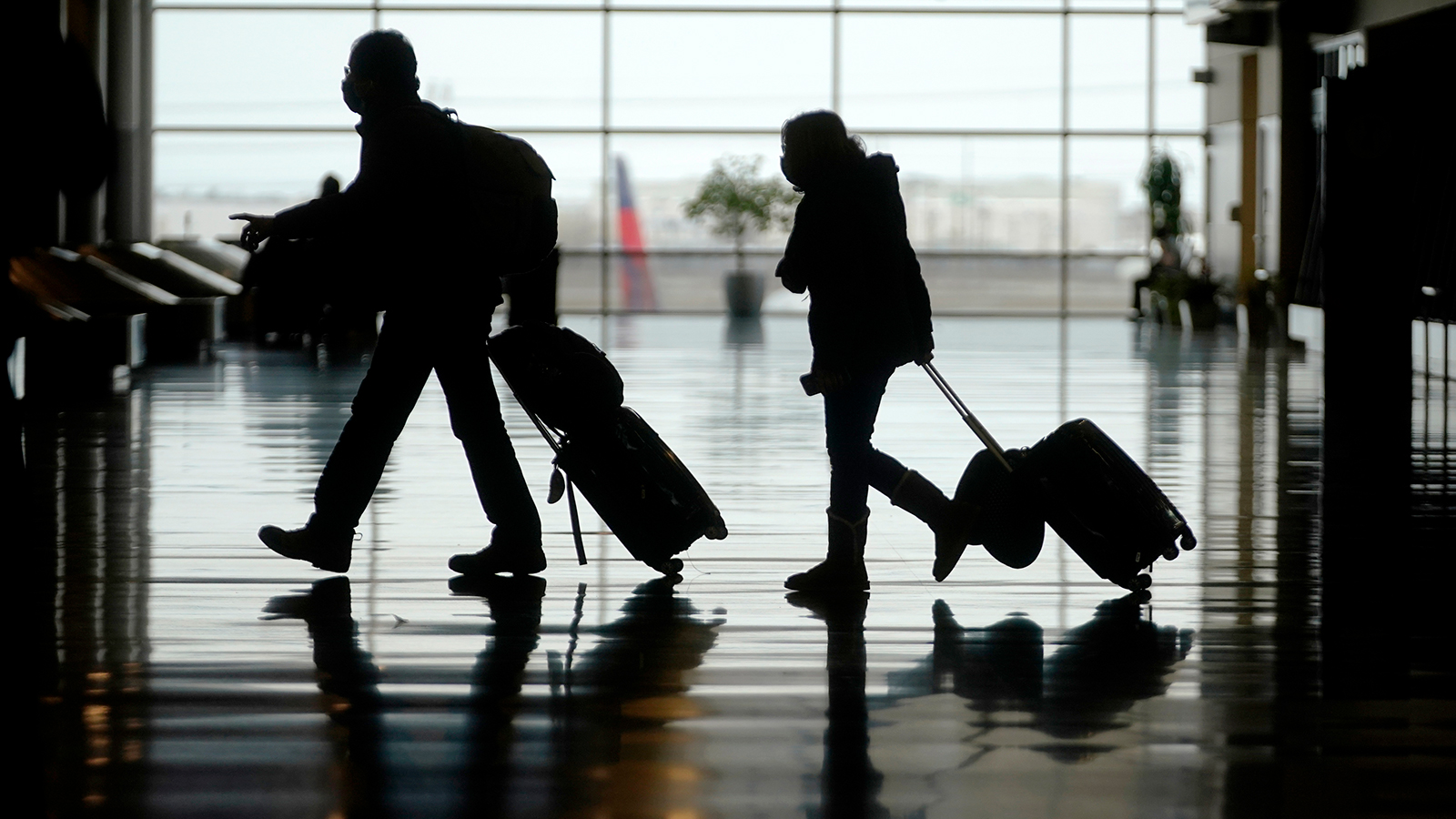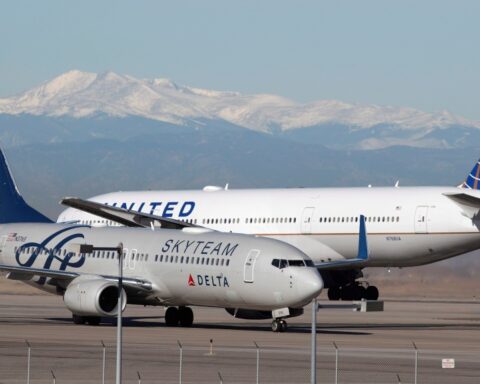Experts are worried some Americans are letting up too early — at a critical time when looming dangers are threatening to wipe out the progress the US has made in its battle against Covid-19.
At least a dozen state leaders have eased Covid-19 restrictions this month, often citing improving Covid-19 trends and growing vaccination numbers. At the same time, air travel is hitting pandemic-era records and the first spring break crowds have begun descending on Florida and other sunny regions while cases of a dangerous variant are on the rise.
The Transportation Security Administration said it screened more than 1.3 million people at airports Sunday — meaning about 5.2 million travelers flew since Thursday. That’s the highest number of people that have traveled by air during any other four-day period of the pandemic.
In Florida, spring breakers have begun packing shores with some Miami Beach officials reporting swelling crowds and precautions going out the window.
It’s a combination of all those factors, officials fear, that could lay the groundwork for another spike.
“We have seen footage of people enjoying spring break festivities, maskless,” Centers for Disease Control and Prevention Director Dr. Rochelle Walensky said Monday. “This is all in the context of still 50,000 cases per day.”
So is another surge inevitable?
“We could go in either direction,” emergency physician Dr. Leana Wen told CNN on Monday. “What happens now is really up to us and whether we keep up masking and avoiding indoor gatherings as we should be until the point that we’re vaccinated.”
You asked, we answered: Your top questions about Covid-19 and vaccines
A dangerous variant will be dominant soon
The safety measures will be especially crucial now that multiple variants of the virus are circulating — including the highly contagious B.1.1.7 variant that was first identified in the UK.
It’s projected to become the dominant variant in the US by the end of this month or early April, Walensky said Monday.
Cases of the B.1.1.7 variant have so far been found in 48 states, Puerto Rico and Washington, DC, according to CDC data.
“The way the variants spread is by letting our guard down,” Dr. Richard Besser, the former acting CDC Director told CNN on Monday. “By not wearing masks, by not social distancing. If we can hang in there for a few more months, there will be enough vaccine for every adult in America to be vaccinated.”
“Then we can truly let go of some of the restrictions that are in place. But if we do this too quickly, we could see an increase in cases, we could see a backslide that is occurring in many European countries and that does not have to be the outcome here in America,” he added.”
Research published last week suggested that the variant was associated with an estimated 64% higher risk of dying from Covid-19.
And another peer-reviewed study has linked the variant to a higher risk of death, according to a paper accepted by the journal Nature. This time, the risk of death from the variant was estimated around 55% higher than earlier strains after adjusting for a number of factors like age, sex, and where and when tests were conducted.
A subsequent analysis in the study that accounted for missing and potentially miscategorized test results found the overall increased risk of death may be somewhat higher — around 61% more than earlier strains.
The study was not able to factor in vaccination nor could it show why the variant might be more deadly than earlier strains.
Daily vaccination numbers hit record levels
But there is good news: Vaccinations are ramping up and experts are hopeful Americans will be able to see a semblance of normality by the summertime.
Data updated by the CDC on Monday shows the country hit a seven-day average of about 2.4 million Covid-19 vaccine doses administered per day, a new record.
That comes as more states expanded their eligibility requirements for vaccinations.
In Mississippi, Gov. Tate Reeves announced Monday the state would be opening up appointments to all residents who are 16 and older starting Tuesday.
Pfizer’s Covid-19 vaccine is the only one available for use by people who are 16 or older, while the Moderna and Johnson & Johnson vaccines are restricted to people 18 or older.
“Starting tomorrow, ALL new appointments will be open to ALL Mississippians. Get your shot friends – and let’s get back to normal!” he wrote on Twitter.
In West Virginia, Gov. Jim Justice expanded the list of pre-existing medical conditions that make residents eligible to receive a vaccine.
“We’re on a glide slope to being able to get our lives back to normal, and that’s what we want more than anything,” Justice said.
So far, more than 71 million Americans have received at least one dose of a Covid-19 vaccine, according to CDC data. More than 38 million have been fully vaccinated — roughly 11.5% of the US population.
Most Americans are getting their second dose on time
Also, most people who have received a first dose of a Covid-19 vaccine are getting their second dose on time, according to early data from the CDC.
But the CDC researchers warned that the initial groups prioritized to receive the vaccine — healthcare workers and long-term care facility residents — have had easy access to a second dose through their workplace or residence.
“As priority groups broaden, adherence to the recommended dosing interval might decrease,” they wrote in the report that published Monday.
For the Pfizer and Moderna vaccines, it is recommended second doses be administered 21 and 28 days later, respectively, but the researchers noted in their report that up to 42 days between doses is permissible, if needed.
The report includes data on more than 37 million people who received at least their first shot between December 14 and February 14.
Among those who had received both doses, the researchers found that 95.6% received their second dose within the recommended time interval.
They noted that severe weather events led to distribution challenges and canceled appointments during the time of the study and more research will be needed to examine the completion of second doses over a longer period of time.
“Continued monitoring of series completion status across jurisdictions and by demographic characteristics is important to ensure equity in vaccine administration and vaccination coverage, especially as vaccination efforts expand to additional population groups,” they wrote.


